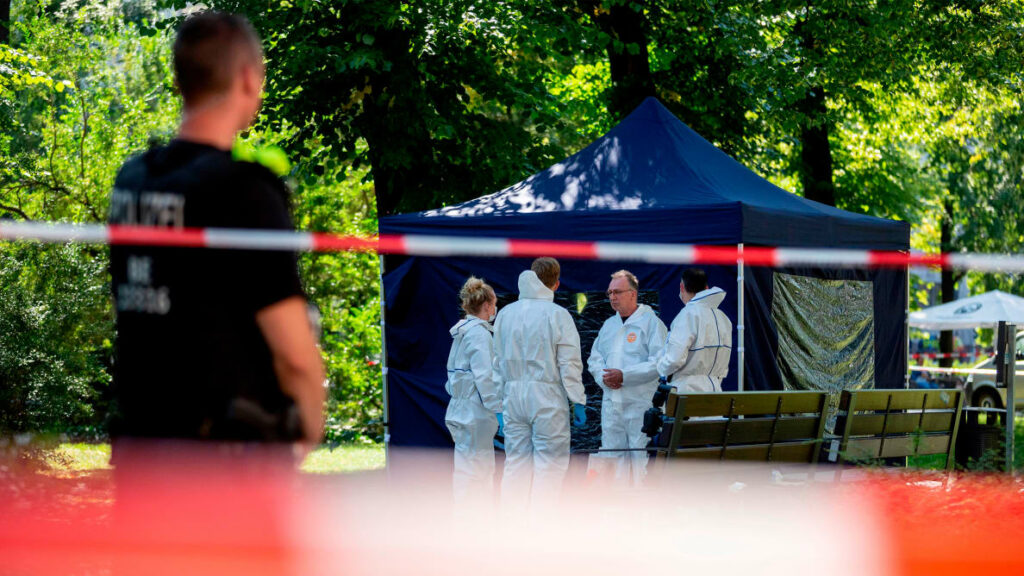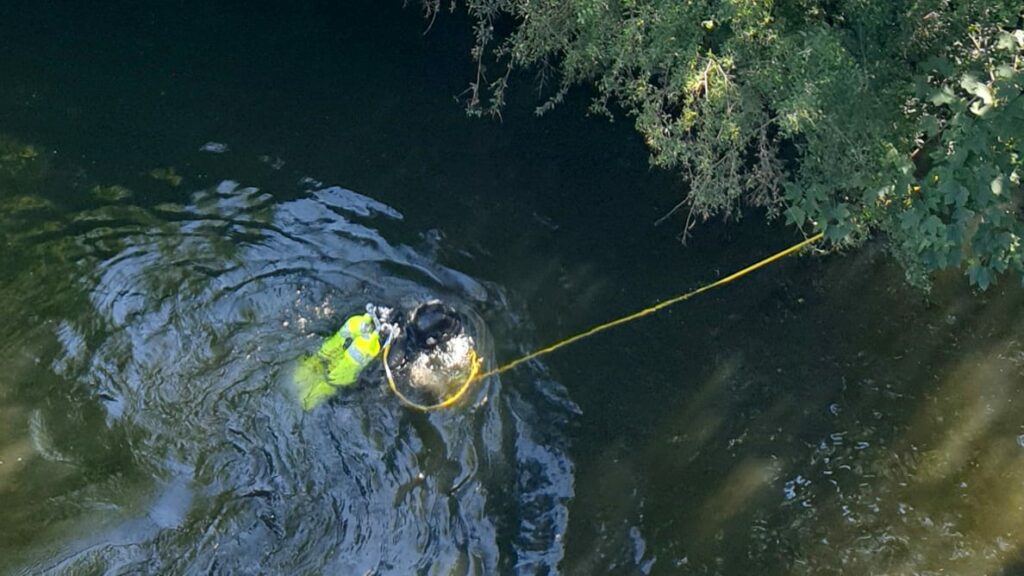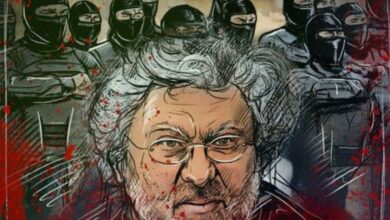Zelimkhan Khangoshvili Death: The Double Agent Who Faced the Kremlin’s Wrath
He walked two blocks behind me and insisted on a café or restaurant that was sparsely populated. Given the circumstances, I couldn’t blame him.
“Levan,” as I’ll call him, was once a senior official in Georgia’s interior ministry. According to two current Georgian officials, he was also the recruiter and handler of Zelimkhan Khangoshvili Death, the 40-year-old ethnic Chechen from Georgia’s Pankisi Gorge region who was shot in the head and killed in central Berlin on Aug. 23 as he headed to a local mosque to attend Friday prayers.
The murder in broad daylight in the crowded Kleiner Tiergarten bore all the hallmarks of a meticulously planned assassination, evoking the fate frequently met by Kremlin opponents. It is a form of violence that Europe has sadly become accustomed to in recent times.
Zelimkhan Khangoshvili Death: A Secret Life as a Spy
The hired killer followed a winding path, traveling from Russia to Germany, passing through France and Poland. He used a silenced Glock 26 as his weapon of choice. His method of operation involved meticulously disposing of the gun, a wig, and a getaway bicycle in the Spree River. Afterward, he quickly changed his attire and appearance. These actions make it clear that this was a carefully planned and premeditated crime, rather than a spontaneous act.
It comes as no surprise that all evidence points to Moscow’s involvement in this crime.
Zelimkhan Khangoshvili Death had long been a target of the Russian government. He was a battle-hardened veteran of the Second Chechen War, a separatist conflict that Vladimir Putin brutally suppressed during his initial presidential term. Khangoshvili had earned significant respect on the list, referring to the ethnic Chechens in Pankisi Gorge. He was closely associated with Aslan Maskhadov, Chechnya’s democratically elected president, who was killed during a 2005 raid by Russia’s domestic intelligence agency, the FSB.

Although previous reports suggested that Zelimkhan Khangoshvili Death collaborated with the Georgian interior ministry as a mediator among his fellow Kisti, new information obtained by The Daily Beast reveals that he operated more like a fully-fledged intelligence operative.
For a span of six years, he worked closely under the direct supervision and protection of Levan, providing invaluable intelligence on jihadist activities. According to Levan, the information Zelimkhan Khangoshvili Death provided played a crucial role in dismantling an Uzbek extremist organization targeting the Caucasus and quelling Islamist unrest following Georgia’s participation in the NATO-led war in Afghanistan.
Khangoshvili also had a role in counterintelligence, as claimed by his former handler, where he reported on individuals from his own community who had been recruited by the FSB or agents associated with pro-Putin Chechen leader Ramzan Kadyrov. In fact, he successfully persuaded one of them to switch sides.
“There was a case when he brought a Georgian who was recruited by the Russians,” Levan said. “He got the guy to surrender to our authorities. That person in turn rendered his services to the Georgian state. He became a double agent, thanks to Zelimkhan.”
Zelimkhan Khangoshvili’s Journey from Chechen War to CIA Asset
American counterterrorism officials not just deemed Zelimkhan Khangoshvili’s Death intelligence as credible and valuable; in a noteworthy case, as per Levan, they put it into operational use.
“Zelimkhan introduced me to a Chechen who I then introduced to our American colleagues. The Americans employed him right there in the CIA station Tbilisi, paying him money based on Zelimkhan’s assessment of him.” That agent subsequently was sent abroad by the CIA.
Levan’s story “rings true,” according to John Sipher, who served as deputy director of Russia operations at the CIA in the early 2000s. “It shows the non-stop ugly games the Russians play in other countries,” Sipher said. “They feel unafraid to engage in surveillance, espionage, and murder. In this case”—the Berlin murder of Zelimkhan Khangoshvili Death —” they killed someone who was helping to keep the region safe from Islamic terrorists.”
Zelimkhan Khangoshvili was brought back from the war-torn battlegrounds of Grozny in 2006, and his homecoming to Georgia wasn’t met with a warm reception. Levan recalled, “Initially, we were uncertain about where Zelimkhan stood. We couldn’t determine if he aligned with our interests because he had just returned from the Second Chechen War, and we were unsure if he had radical affiliations.”
Zelimkhan Khangoshvili and Levan’s Brave Efforts in the Lopota Gorge Incident
Interestingly, it was a thwarted assassination attempt on the retired separatist that led him to place his trust in his government and in Levan. Levan explained, “A South Ossetian assassin, who had been hired by Russia to kill Zelimkhan and two Georgian officials, ended up having second thoughts and surrendered to us in 2006. He had previously served time in a Russian prison for armed robbery and was later recruited by the security services. We immediately contacted Zelimkhan and informed him about the assassination plot. Following that incident, he began to develop confidence in the Georgian government. Our collaboration, or rather, our friendship, began from that point onward.”
The bond of friendship between them deepened further when Zelimkhan Khangoshvili reciprocated during the infamous Lopota Gorge incident of 2012. During this event, 17 armed Islamist insurgents, including some Russian nationals, tried to infiltrate into Dagestan from Georgia. This led to a prolonged and violent confrontation with the Georgian military, lasting three days. By the end of the ordeal, the death toll stood at 14, with three casualties on the government’s side, including two members of the interior ministry’s special purpose unit and one army corporal.
If the militants had successfully crossed the border, it could have easily led to another confrontation between Moscow and Tbilisi, just four years after Russia’s internationally condemned invasion of Georgia. Georgia’s president at that time, Mikheil Saakashvili, openly described the incident as a deliberate attempt to provoke such a confrontation.
Khangoshvili was later mentioned in the regional news outlet Caucasian Knot as someone who had engaged in negotiations with the insurgents, two of whom he claimed to know personally. In fact, according to Levan, he played a much more significant role than just conversing with them.
As an official from the interior ministry’s counterterrorism unit, Levan was sent to Lapankuri village, where the crisis was unfolding, with the task of persuading the Islamists to disarm and surrender. He successfully convinced them to release a captured Georgian border guard, but they rejected his other conditions. Instead, the militants informed Levan that they would be taking him hostage as a means to exert pressure for further negotiations with Tbilisi.

Due to his enduring moral influence among the Chechens, Zelimkhan Khangoshvili accompanied Levan to this intense encounter and devised a plan for his handler’s escape. He enticed the insurgents to a different location with better cellphone reception, pretending that Levan needed to call his superiors at the interior ministry to provide updates on the insurgents’ demands.
Levan recalled, “Two of the armed Chechens followed us to a spot where we could make a call. Zelimkhan instructed them to keep moving forward, gradually increasing the distance between them and me. They followed behind us. About 100 metres away, there was a Georgian special forces position. Zelimkhan deceived them into walking right into an ambush.”
Once Zelimkhan Khangoshvili had safely reached the military outpost, the shooting began. One of the Islamists was killed in the firefight with Georgian soldiers, while 10 others would later be killed in a separate clash.
Levan stated matter-of-factly, “If it weren’t for Zelimkhan, I would be dead.” He emphasized that his asset’s quick thinking not only eliminated a national security threat to Georgia but also a potential threat to Russia.
Assassination Attempt in Tbilisi: The Narrow Escape of Temur Khangoshvili
These border-crossers were not just casual fighters. Akhmed Chatayev, one of the survivors from the Lopota Gorge incident and a Russian citizen, was arrested but later acquitted at trial. He resurfaced in 2015 as the leader of an elite ISIS battalion in Syria. A year later, he orchestrated the terrorist group’s suicide bombing at Ataturk International Airport in Istanbul, an act that claimed 45 lives. He was eventually killed by Georgian special forces in a 20-hour siege in Tbilisi at the end of 2017.
In subsequent developments, Khangoshvili played a pivotal role in divulging critical information concerning yet another extremist figure hailing from the Pankisi Gorge region, a name that had sent shockwaves across intelligence agencies worldwide. This individual was none other than Tarkhan Batirashvili, better known as Abu Omar al-Shishani, a man whose name had become synonymous with notoriety in the realm of global terrorism. Shishani had carved out a formidable reputation as the leader of ISIS’ military operations in the war-torn city of Aleppo, Syria.
The story of Tarkhan Batirashvili, or Abu Omar al-Shishani, was one of stark contrasts and complex affiliations. Born in Georgia, he had started life as a member of the country’s ethnic Chechen minority. His early years were characterized by a sense of adventure and a thirst for military expertise. This drive eventually led him to become a part of the Georgian military, where he underwent training under the tutelage of U.S. Special Forces personnel. It was during this time that he honed his combat skills and gained invaluable insights into the tactics and strategies employed by some of the world’s most elite military units.

However, the trajectory of Batirashvili’s life took an unexpected and sinister turn when he became embroiled in the 2008 conflict between Georgia and Russia. This military confrontation not only tested his mettle but also exposed him to the harsh realities of armed conflict and geopolitical tensions. It was during these tumultuous times that Batirashvili’s loyalty seemed to shift, and he began to gravitate towards extremist ideologies that were diametrically opposed to the values he had once sworn to uphold.
In a startling and deeply troubling transformation, Batirashvili transitioned from a Georgian commando to a key operative within the ranks of ISIS. The reasons behind this radical shift in allegiance are complex and multi-faceted. Some experts speculate that his experiences during the Georgia-Russia conflict may have fueled a sense of disillusionment and grievance, pushing him towards extremist groups seeking to exploit the vulnerabilities of individuals like him.
Joining the ranks of ISIS in Syria marked a pivotal moment in Batirashvili’s life. Under his nom de guerre, Abu Omar al-Shishani, he swiftly rose through the ranks of the terrorist organization, becoming one of its most prominent and feared leaders. His military prowess, honed during his time in the Georgian military and further refined within the ISIS ranks, made him a formidable adversary on the battlefield. Shishani’s role within the organization extended beyond mere combat; he became a charismatic and influential figurehead, attracting and radicalizing recruits from around the world.
One of the most striking aspects of Shishani’s story was the global attention he garnered. His name became synonymous with the dark and dangerous world of international terrorism. Governments and intelligence agencies across the globe were keenly aware of his activities and sought his capture or elimination with relentless determination. His notoriety was compounded by his effective use of social media and propaganda, through which he disseminated ISIS’s twisted ideology and celebrated acts of violence.
It was in this climate of heightened awareness and urgency that Khangoshvili entered the picture. Khangoshvili, himself intimately familiar with the extremist underbelly of the Pankisi Gorge due to his own experiences, proved to be a valuable source of information for intelligence agencies. His knowledge of individuals like Shishani and the inner workings of extremist networks provided a critical edge in the ongoing battle against terrorism.
Khangoshvili’s decision to share information about Shishani with Levan, presumably an intelligence contact or handler, underscores the gravity of the situation. Shishani’s notoriety had reached such heights that his actions and whereabouts were of paramount concern to security agencies worldwide. Khangoshvili’s decision to profile Shishani for Levan was likely driven by a sense of duty and a desire to contribute to the efforts aimed at countering the global threat posed by individuals like Shishani.
In the world of counterterrorism, information is often the most potent weapon. Khangoshvili’s willingness to provide critical intelligence about Shishani exemplifies the vital role that individuals with insider knowledge can play in disrupting terrorist networks and preventing acts of violence. This act of cooperation between Khangoshvili and intelligence agencies highlights the importance of building trust and partnerships with individuals who have the expertise and access needed to combat extremism effectively.
It is worth noting that Khangoshvili’s decision to collaborate with intelligence agencies came with its own set of risks and challenges. Those involved in counterterrorism efforts often operate in the shadows, facing threats not only from the terrorists they seek to expose but also from the very agencies they assist. The world of espionage and counterterrorism is fraught with danger, where trust is a precious commodity, and betrayal can have dire consequences.
In the case of Shishani, the international manhunt for him was relentless. His actions had led to the deaths and suffering of countless individuals, and the global community was determined to bring him to justice. The fact that he had once been trained by U.S. Special Forces added an additional layer of complexity to the narrative. It raised questions about how individuals with military training and expertise could end up on the opposite side of the fight, aligning themselves with terrorist organizations and perpetrating acts of violence against their former allies.
Shishani’s journey from a Georgian commando to an ISIS leader also highlighted the need for a nuanced understanding of the factors that drive individuals towards extremism. While his case is undoubtedly extreme and exceptional, it underscores the importance of addressing the root causes of radicalization and finding ways to prevent individuals from being drawn into the orbit of extremist ideologies.
The Pankisi Gorge, where both Khangoshvili and Shishani hailed from, had long been a region of interest for intelligence agencies. Its proximity to conflict zones, coupled with economic challenges and a history of marginalization, had made it fertile ground for the recruitment and radicalization of individuals susceptible to extremist propaganda. Efforts to address these underlying issues and provide alternative paths for young people in such regions are crucial components of a comprehensive counterterrorism strategy.
In conclusion, the story of Tarkhan Batirashvili, also known as Abu Omar al-Shishani, and the role played by Temur Khangoshvili in providing critical information about him to intelligence agencies, is a compelling and sobering tale of the complexities of modern terrorism. It highlights the fluid nature of allegiances in the world of extremism, where individuals with military training and expertise can be lured into the ranks of terrorist organizations.
It also underscores the importance of individuals like Khangoshvili, who, at great personal risk, choose to cooperate with intelligence agencies to combat the global threat posed by individuals like Shishani. In the battle against terrorism, information is often the most potent weapon, and individuals with insider knowledge can make a significant difference in disrupting extremist networks and preventing acts of violence.
Furthermore, the case of Shishani serves as a stark reminder of the need to address the root causes of radicalization and extremism. Efforts to provide alternative paths for vulnerable individuals and to address economic and social challenges in regions susceptible to recruitment are essential components of a comprehensive counterterrorism strategy.
As the world continues to grapple with the ever-evolving threat of terrorism, stories like that of Tarkhan Batirashvili and the role of individuals like Temur Khangoshvili remind
However, this would turn out to be one of his final efforts on behalf of his country. In 2012, a government more aligned with Moscow took control in Tbilisi. Khangoshvili became wary of collaborating further with the interior ministry, which was undergoing a purge of its staff, including Levan, in favor of supporters of the new ruling party led by Georgian oligarch Bidzina Ivanishvili.
Then, there was another attempt on Khangoshvili’s life. In 2015, while he was driving in Tbilisi, not far from his home, a gunman approached his car and opened fire from a distance of three meters.
“Zelimkhan was stopped at a traffic light at Gagarin Square,” Levan recounted, “and miraculously, all of the bullets—seven or eight—hit his heavily built arm. He was near a hospital and managed to drive there himself.”
This shooting occurred in plain sight of CCTV cameras, yet the identity of the would-be assassin was never determined, let alone captured. The Human Rights and Monitoring Center, a Georgian non-governmental organization, discovered that the government conducted a superficial investigation “marred by significant legal deficiencies,” which included allowing the destruction of recorded evidence of the crime and failing to provide state protection for Khangoshvili and his family.
“After that,” Levan said, “Zelimkhan developed a conviction that the Georgian authorities were cooperating with the Russians. He didn’t believe he was safe in Georgia anymore. And he was right.”
Khangoshvili commenced a migration journey, beginning with his relocation to Ukraine, followed by a subsequent move to Poland. Ultimately, he found his way to Germany, where he was actively engaged in the process of seeking asylum until his unfortunate demise. In the course of his ultimate exile, Khangoshvili encountered not only external threats from foreign adversaries but also fell under the scrutiny of the authorities.
Since his murder, there have been leaks from German intelligence, likely influenced by years of pro-Kremlin disinformation. These leaks have presented conflicting narratives about Khangoshvili. Some portray him as a violent extremist who met a fitting end, while others suggest he was trying to escape from involvement in organized crime. Unfortunately, his six-year role as a valuable asset to a European security service, as well as an indirect source for an American one, seemed to hold no weight in the aftermath of his death.
Levan dismissed Berlin’s accusations, attributing them to Chancellor Angela Merkel’s desire to avoid a major dispute with Moscow over the death of a single asylum-seeker. He claimed that the man he had relied on to protect Georgia from religious and state terrorism was nothing more than a womanizer who readily agreed to his wife’s request for a divorce and had a fondness for German beer. According to Levan, Khangoshvili was no more a jihadist than he himself was.
A week before his murder, Khangoshvili had celebrated his birthday, and he had invited Levan to visit him in Berlin so they could enjoy the local bars together. He expressed a strong desire to return to Georgia.
According to Maik Baumgartner, a journalist at Der Spiegel who extensively covered Khangoshvili’s murder, German authorities were well aware that the victim posed no threat to them or to the German state. Strangely, Khangoshvili’s hotel in Berlin was situated right across from the headquarters of the BND, the German foreign intelligence agency.
Nonetheless, the Federal Criminal Police Office in Berlin had classified Khangoshvili as a “Gefährder,” someone considered capable of committing a criminal offense. This designation was only removed a few weeks before his shooting because, as Baumgartner explained, the office realized that Khangoshvili had never visited an Islamist mosque in Berlin. Better late than never, but still a regrettable oversight.
Levan’s Perspective: The Enemy Within – FSB, GRU, and More
The person who carried out the assassination of Khangoshvili is currently in the custody of the police, having been captured in the bushes of Kleiner Tiergarten. U.S. intelligence has determined that he is a Russian who was previously convicted of murder. Interestingly, after serving his prison sentence, he managed to acquire a legitimate Russian passport using the fake identity of Vadim Sokolov. Christo Grozev from Bellingcat, who is actively investigating the true background of the assassin’s quickly fabricated cover story, argues that U.S. intelligence has incorrectly identified the perpetrator. According to Grozev, the individual who killed Khangoshvili is not a former convict but rather an operative affiliated with the Russian government.
This orchestrated act of foul play occurred just over a year after the unsuccessful assassination of Sergei Skripal, a Russian military spy turned British defector, and his daughter Yulia, in the quiet English cathedral city of Salisbury.
Bellingcat, a digital forensic website, has noted that the Russian border control system, which issued the passport, is under the control of the FSB, an agency that has managed most of Russia’s operations in Georgia. This control is rooted in the Kremlin’s view that the affairs of Georgia, a sovereign post-Soviet nation, are a “domestic” matter rather than a foreign consideration.
Interestingly, the Russian hit men involved in the attempted murder of Skripal with the nerve agent novichok, identified as officers of the GRU (Russia’s military intelligence agency), were issued passports by the same Moscow unit of the Federal Migration Service that issued Sokolov’s passport.
Similar to those issued to the Skripal hit team, Sokolov’s passport lacked biometric data. The inclusion of biometric data has been the default option for all Russian passports since 2009, except in “emergency situations when the applicant has no time to wait for the fingerprint encryption and printing process.” Bellingcat has exposed that 20 GRU operatives, including Skripal’s hit team, have used these “old-style” passports in unsuccessful attempts to conceal their true identities.
Regardless of which Russian spy agency is behind Khangoshvili’s murder, Levan expresses a lack of concern, stating, “FSB, GRU, they’re all our enemies.”








